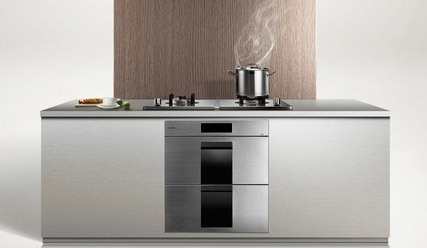How to choose a cooking stove?
Apr 21,2025

Cooktops are essential to our daily lives. For long-term users, how can one choose a good cooktop? Here are some tips for purchasing cooktops for your reference.
The type of gas stove should suit the local gas source. You need to know what type of gas your home uses: natural gas, manufactured gas, or liquefied petroleum gas. The calorific value and gas pressure of these three types of gases are different. If the type of stove does not match the gas, it may cause danger. Therefore, stoves used for different gas sources should never be mixed. Before purchasing a stove, you should first clarify the type of gas used. When purchasing a household gas stove, customers should pay attention to the type of gas indicated on the packaging box. You can also identify the type of gas from the model of the household gas stove. For example, the model number JZ-2T-A household gas stove, J represents household, Z represents stove, 2 represents two-eye stove, T represents natural gas. If the letter is R, it represents manufactured gas, and Y represents liquefied petroleum gas.
Packaging and labeling should be complete. This is very important. If it is a "three-no" product, do not buy it easily, otherwise it will endanger your personal safety. Generally speaking, the packaging should indicate the factory name, address, and model number, and each stove should have a certificate of conformity, instructions for use, and a nameplate (product trademark) on the side panel of the stove. The nameplate should also indicate the factory name, model number, applicable gas and pressure, heat flow, and production date, etc.
Appropriate heat flow and good airtightness. Heat flow: The larger the designed heat flow value of a household gas stove, the stronger the heating capacity, which is often referred to as a more intense fire. However, in practice, the size of the heat flow should be adapted to the cooking method and the stove. If only a large heat flow is pursued, it will greatly reduce the thermal efficiency of the stove and increase the emission of waste gas. Airtightness: If the purchased and used stove does not meet the airtightness requirements, it is the biggest hidden danger causing safety accidents. Here is a simple detection method: connect the gas source, close the knob, and apply soap solution to the plastic pipeline, valve body, and interface. If there is no gas leakage, it indicates good airtightness, and you can purchase it with confidence.
Body quality and ignition switch. Body quality selection: The appearance of the gas stove should be beautiful and generous, and there should be no collision marks on the body. Press the countertop with your hand. There should be no obvious warping; hold the two corners of the stove and twist it back and forth. The stove should not deform. The panel material of the stove cannot use tinplate (a magnet can be used to distinguish whether it is tinplate or stainless steel material); the surface paint of products made of cast iron, steel plate, etc., should be uniform and smooth, without blistering or peeling. The overall structure of the gas stove should be stable and reliable, the stove surface should be smooth and flat, without obvious warping, and the installation of components should be firm and reliable, without loosening. The burner and fire cover of the stove should be finely processed, without obvious burrs. Ignition switch: The position of the ignition switch, i.e., the ON and OFF positions, and the positions of high and low fire (generally with graphic symbols), should be clearly and accurately marked; when igniting with an electronic ignition switch, the sound should be crisp and powerful. If the ignition sound is soft and muffled, it is likely to be a substandard product. Generally, the continuous service life of a qualified stove ignition switch is more than 6000 times, and the valve airtightness is still qualified; while the number of times for inferior products is less than 2000 times. Generally, for qualified products, if ignited continuously 10 times, the number of times ignited should not be less than 8 times, and all fire holes should be ignited within 4 seconds.
Flame combustion state. This is an important reflection of the combustion quality of the stove. Generally, the outer flame should be light blue during combustion. (Sometimes it may be orange-red, which indicates that there are impurities or a small amount of air in the gas, but it does not affect normal use). After ignition, adjust the flame size control knob, the high and low fire should be clearly layered, and the combustion should be stable. Even if adjusted to the minimum state, or the gas valve is turned down, it should still burn normally, without jumping fire, extinguishing, or backfire.
Generally, a good gas stove has a service life of 5-10 years (according to national regulations, i.e., the standard ignition is not less than 5000 times), while a poor-quality gas stove has a service life of only 1-2 years, and will cause unsafe personal injury accidents during use. In addition, since the gas quality varies from region to region, especially manufactured gas, the difference is large. Therefore, when consumers purchase gas stoves, it is best to choose gas stoves that have been tested and approved by the local quality inspection department and are suitable for the local gas source.

Subverting Tradition, Ushering in a Kitchen Revolution
Address: No. 9, Xinghe Road, Rongbian Tianhe Industrial Zone, Shunde District, Foshan City, Guangdong Province
Copyright © Foshan Gumei Electrical Appliance Co., Ltd.





